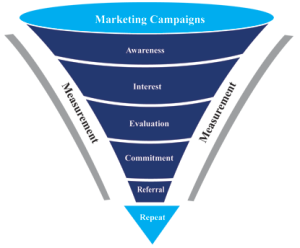Apologies for the paucity of postings this week, but with the kids off for school vacation and lots of snow on the ground, I decided to go light on the blogging front, although I did want to finish up that thought I started last time with regard to the metaphors we use to describe the MOOC phenomenon.
The metaphor of the classroom-based college course has actually served MOOCs pretty well.
Most of us who sign up for a MOOC know what a syllabus is and how to translate course requirements (such as lectures, reading, tests and other assignments) into the number of hours we need to set aside to succeed in a class. And we understand how to learn from lectures, even if our MOOC professors tend to get out of the building (to add interviews or field trips inside “lecture” videos) more frequently than do their classroom equivalents.
I suspect one of the reasons it’s been so easy to get tens of thousands of people to sign up for an xMOOC characterized by the classroom-based course metaphor (vs. a cMOOC based on an entirely different paradigm) is that the classroom metaphor provides students a degree of familiarity that helps them navigate their learning experiences. The trouble is, over-reliance on a single metaphor can lead us to misinterpret data in ways we never would if we weren’t trying to force-fit that data into our preferred metaphorical framework.
For instance, when people criticize MOOCs for their high “drop-out rates,” they are implicitly assuming that those who start a massive online course and do not earn a certificate should be considered the equivalent of a student who enrolls in a class at a residential college and drops out before the end. And since residential students only tend to drop a class when either they or the course is failing, we tend to project this sense of failure onto MOOCs as a whole.
But as current research indicates, people are interacting with the content from massive online courses in ways that do not have classroom equivalents. And while we could stretch the classroom metaphor to the breaking point to include categories such as browsers, dabblers and auditors, a different metaphor might help us better understand what students are doing as they move through the MOOC pipeline.
I chose that word “pipeline” deliberately. For in that discussion with Justin Reich I mentioned last time (which will air as a podcast a week from this coming Friday), he brought up another metaphor – the sales funnel – which provides a way of looking at MOOC data that provides some valuable and, most important, actionable insights.
The sales funnel is a device (really a metaphor) used by businesspeople to describe the flow of potential clients through their sales processes. Someone selling widgets (physical objects, from yo-yos to real estate) might use a funnel like this one:
In this case, the people coming into the funnel include anyone who has expressed even the slightest interest in buying a widget (by clicking on a banner ad, responding to a promotional flier, or simply being part of a widget-buying demographic). And as those leads engage more deeply with a company or its products, some continue in their relationship (turning from “suspects” into “prospects”) while others lose interest. This is why an experienced seller, who understands the flow of people within their sales process, knows how to keep his or her funnel populated with enough people at each stage needed to meet sales goals.
Now MOOC vendors are not selling widgets, but the sales funnel metaphor is already used to understand user behavior for Internet-based products given away for free. In the case of commercial sites built on a “freemium” business model, for instance, people registering for a free online product represent the suspects at the top of a sales funnel, some of whom will eventually make it to the bottom of the funnel and become buyers of a site’s premium services.
In other cases, users of a site are not treated as potential customers but rather serve as the product offered to a different audience (such as advertisers). In such cases, the online provider’s job is to keep one group (users) happy and engaged with a site while another audience (ad buyers) makes its way through a sales funnel like the one just described for widget-sellers.
For services (like education and training) offering self-improvement as an end result, engagement is a key metric for measuring success. And, as Reich mentioned in our discussion, those involved with online training have been startled by the high degree of engagement of many students involved in a MOOC class. How does such an observation jibe with the 95% drop-out rates often associated with many a MOOC? Well that 95% figure comes from continued use of the classroom metaphor (which treats everyone who signs up but doesn’t certify as a “drop-out”) while an analysis of high levels of engagement derives from a sales funnel (or engagement funnel) metaphor which compares the behavior of students enrolled in a MOOC to those enrolled in other forms of online learning.
And when I’m back in the saddle next week, I’d like to take a look at how the engagement funnel metaphor can be used to frame critical decisions by MOOC developers looking to meet varying goals, from making a buck or driving up certification rates, to educating everyone in the world for free.

Leave a Reply